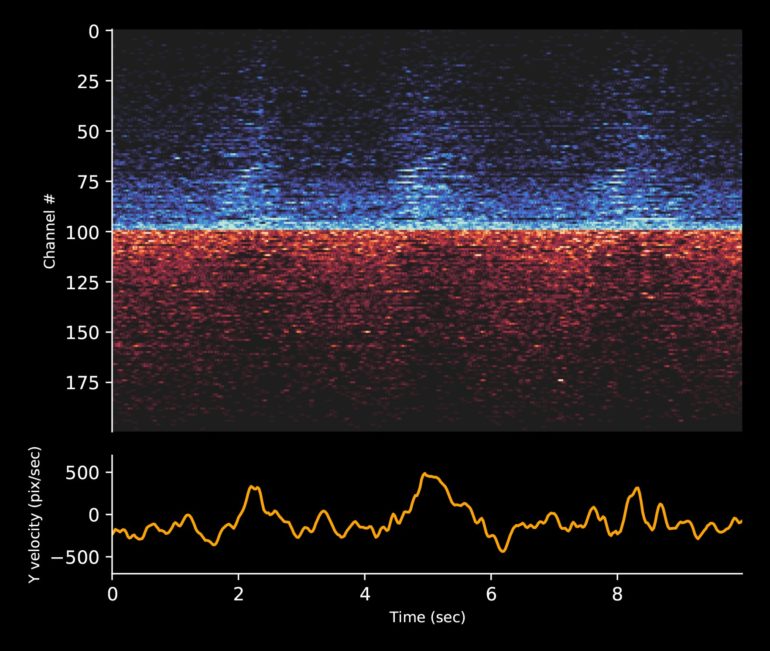Since the year 2019, the neurotechnology company Neuralink has been developing technology to better capture the brain activity of humans. Beginning with tests on rodents, the company founded by Elon Musk has succeeded in creating a connector through the skin coupled with wired leads as part of a robotics-based surgical approach and ultra low-power custom application-specific integrated circuits (ASICs) toward the magnification and processing of neural signals.
In 2020, Neuralink shared another update regarding a wireless version of this link capable of streaming 1,024 channels of action potential, or surges in neural activity, in real time. Researchers showcased the new link’s abilities by recording somatosensory (touch) signals in pigs while the animals explored their environment. In that case, the scientists placed the electrodes on the area of the brain that processes signals from the pig’s hypersensitive snout. While observing the pig going about its natural environment, researchers managed to easily observe neural responses to sensory cues.
While such testing on swine has proven invaluable in demonstrating how sensory neurons work and can tie into technology, researchers have realized that in order to adapt these electrodes for human use, they needed to try out the process on an animal with a neural topology closer to that of humans—primates. In particular, the goal remains to develop a brain-machine interface (BMI) technology capable of arm and hand-based use. This type of closed-loop BMI aims to help people with neurological disorders to more easily navigate their surroundings.
Most recently, the macaque model of BMI utilizes macaque monkeys to study neuronic activity. Two links (called N1 links) are placed inside the monkey’s motor cortex, one on the left side and one on the right side. Together, these cortexes process the external stimuli of touch and visual cues. By and large, the technology uses these strategic locations to predict the subject’s intended movements.
Now, scientists are working to develop a decoder that can connect a user’s intended movement and direction to a computer cursor. The sensors involved in this processing of change in direction appear to reflect neurons firing in response to the subject’s movement in said direction. Researchers observed this after watching the monkey subject use a MindPong, a paddle given to the monkey so they could view this neuron-to-sensor activity in action.
However, as people with paralysis sometimes cannot even move any part of their body, researchers are working on developing technology capable of reading neural activity in order to predict even just the desired movements of humans.
Attention and working memory: Two sides of the same neural coin?
More information:
“The First Fully-Implanted 1000+ Channel Brain-Machine Interface.” Neuralink, 9 Apr. 2021, neuralink.com/blog/
2021 Science X Network
Citation:
Neuralink developing brain-machine interface technology to help people with paralysis operate computers (2021, April 9)
retrieved 9 April 2021
from https://techxplore.com/news/2021-04-neuralink-brain-machine-interface-technology-people.html
This document is subject to copyright. Apart from any fair dealing for the purpose of private study or research, no
part may be reproduced without the written permission. The content is provided for information purposes only.



